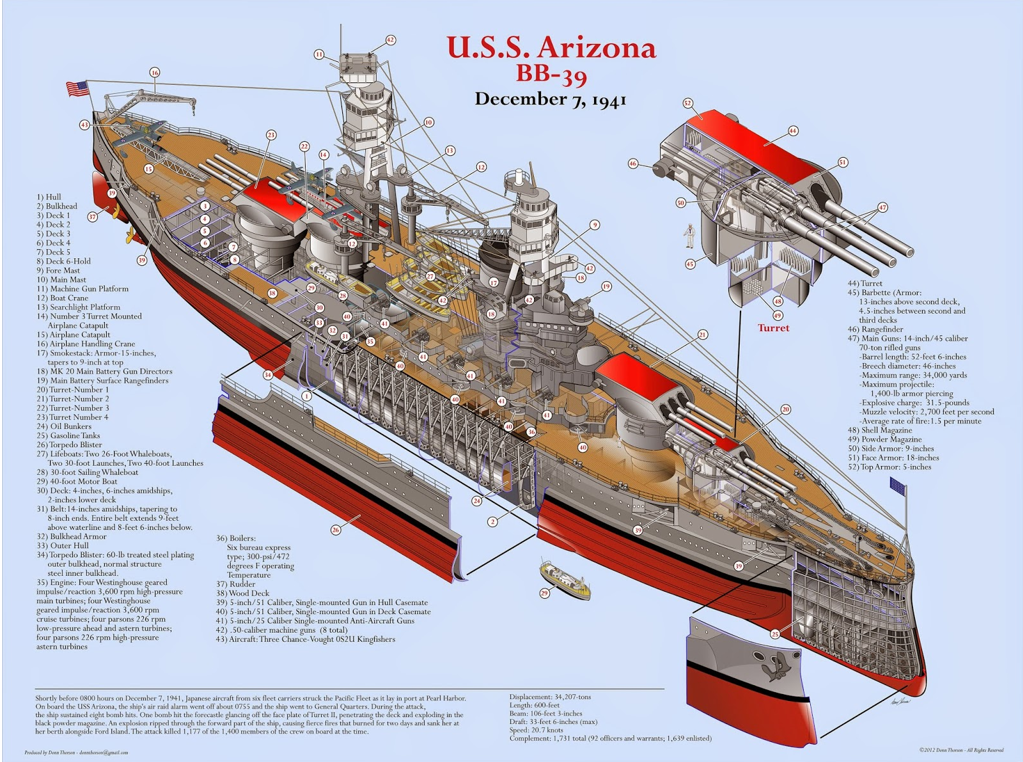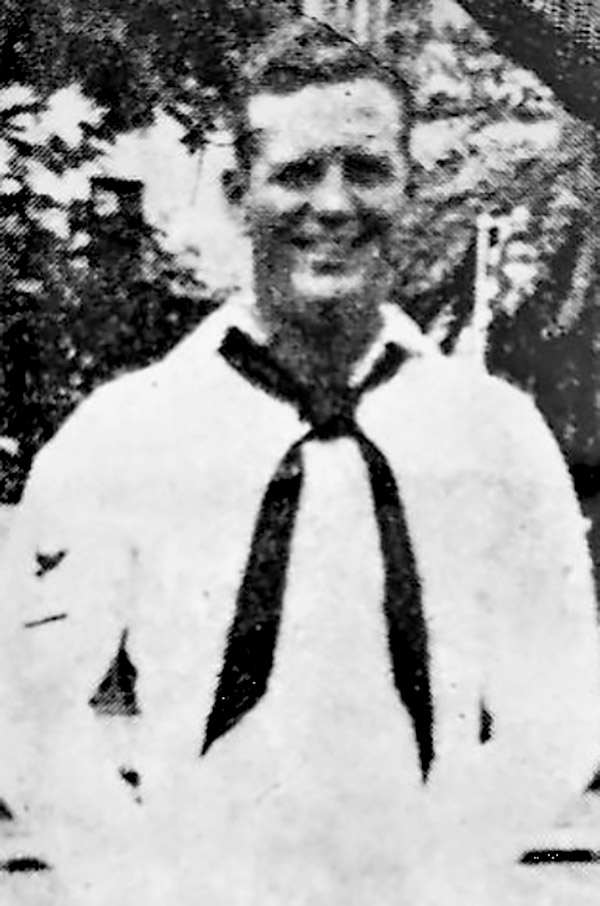
Coxswain Keith Jeffries, U.S. Navy.
Meet Keith Jeffries, U.S. Navy Coxswain and Cranford 86 Hero
In Commemoration of National Pearl Harbor Remembrance Day
By Stu Rosenthal and Don Sweeney
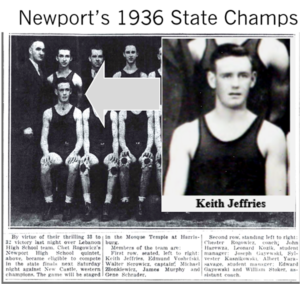
Keith Jeffries’ basketball team won the Pennsylvania state title in 1936, his final year of high school.
We are a small team of amateur historians, executing on a voluntary goal to profile fallen Cranford service members, but we are often challenged by limited facts and a scarcity of firsthand accounts. Each month, a new story emerges about our subject based on a shallow pool of local historical records. Yet, as we mine for new information and interview family members, a door swings open, and we are often surprised by the introduction of new details or the recovery of an old image. What gradually unfolds is the splendid character of a brave young man who typically volunteered for military service, but whose life abruptly ended from war.
It continues to amaze us how many Cranford men have been at the center of many historic or fierce military actions, or traversed engineering marvels that helped advance U.S. strategy. Previous Cranford 86 stories were sometimes prioritized because of the anniversary of a historic event, or one of our local hero’s link to a noteworthy commemoration. This month, as we recall the devastating attack on Pearl Harbor, we believe it is fitting to recount the life of U.S. Navy Coxswain Keith Jeffries, among those lost aboard the USS Arizona during the surprise Japanese strike on Dec 7, 1941. Although Keith did not grow up in Cranford, similar to other Cranford 86 heroes, the creation of Keith Jeffries Ave soon after the war cemented his enduring link to Cranford.
Keith Jeffries was born on March 29, 1918 in Alden Station, Pennsylvania, and was among nine children born to James and Helen Jeffries. As a youth, Keith was an active Boy Scout and sports enthusiast. He attended Newport Township High School, PA, and was a star forward on their basketball team, winning the 1936 state championship soon after his mother died. Keith was a solid hitter on the inaugural school baseball team, served as secretary-treasurer of his class and performed in the senior class play. Following graduation, Keith joined Standard Oil in Aruba, where his older brother John worked as their Safety Director, and another brother James Jr. had also worked.
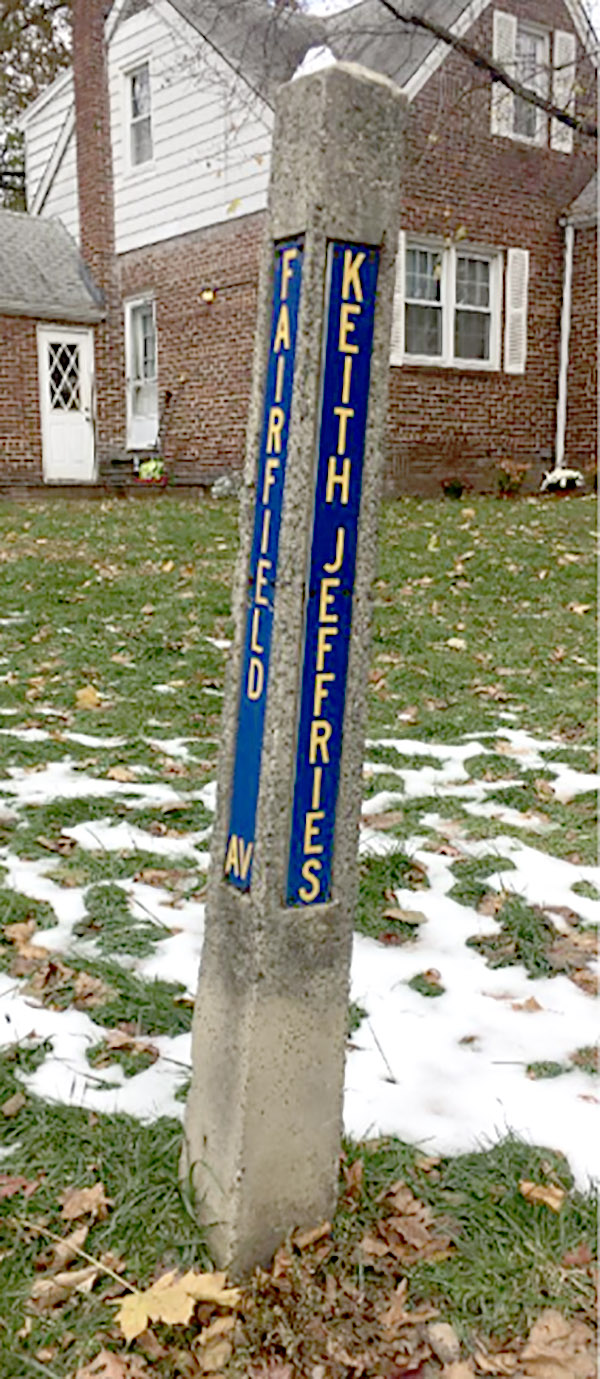
Keith Jeffries Avenue is among 13 streets named in memory of fallen Cranford service members.
Keith left Aruba in July 1938, and likely arrived in Cranford as John took up residence here following a transfer to the nearby Bayway Refinery. Keith found work in Plainfield as a motor mechanic, and lived at 30 Dunham Ave in Cranford with John’s family, and a younger sister, Hazel, who had just arrived from PA. Keith’s then-5-year-old niece, Jane (Jeffries) Rosenthal, recalled Uncle Keith, or “Pete-ee,” living with them in Cranford. We found Jane, now 85, residing in Missouri near her daughter, Susan. Jane remembered when Keith enlisted in the Navy, and also recalled asking him “why would you want to do that?”
In Sep 1939, following the outbreak of war in Europe, U.S. President Franklin D. Roosevelt proclaimed U.S. neutrality, yet authorized a rapid increase in U.S. Naval units and personnel. By Dec 12, 1939, Keith departed Cranford, and arrived for recruit training in Newport, RI. On March 1, 1940, Apprentice Seaman Keith Jeffries reported to the USS Arizona, moored in San Diego, CA, which was receiving an influx of new seamen.
When construction of the USS Arizona (No. 39) commenced in Brooklyn, NY, in 1914, the ceremony was attended, ironically, by the future U.S. President Roosevelt, then the Assistant Secretary of the Navy. The modern battleship was fitted with four main gun batteries, or turrets, each comprising three 45-caliber guns with a range exceeding ten miles. Each shell was the size of a fire hydrant, and weighed nearly 1000 pounds. The Arizona was the first U.S. Navy battleship fueled by oil, but remained stateside during World War I because oil was in short supply. During the 1920s and 1930s, she was mostly used for crew and fleet training. However, in 1931, the Arizona hosted U.S. President Herbert Hoover for a brief visit to the Caribbean. In 1934, she was also featured in the Jimmy Cagney film, Here Comes the Navy.
In April 1940, shortly after Keith reported, the Arizona and the entire Pacific Fleet were transferred from California to Pearl Harbor, Hawaii, then a U.S. territory. This was intended to deter Japan from further expansion into East Asia, following its recent invasion and seizure of parts of China.
The job of a new seaman aboard the Arizona involved laborious deck duty. Keith’s first job likely involved chipping paint, swabbing, polishing brass or holystoning, to illuminate the teakwood by scrubbing it with bricks and water. Below deck, Keith may have washed blankets or aired out mattresses, ridding them of lice. After promotion, a seaman such as Keith could have expected a three-month mess assignment, involving long hours setting up for three meals a day, hauling ingredients, preparing food, serving sailors and cleaning the galley.
In July 1940, the Arizona accompanied other ships to the South Pacific, in a show of force, which included crossing the equator near Jarvis Island. Celebrated by generations of sailors, it triggered a lighthearted induction ceremony for so-called ‘Polywogs’ who had never sailed across the middle of the earth’s surface. It was officiated by officers dressed as King Neptune, a mythological god of the sea, and his court, some dressed in drag. The veteran ‘Shellbacks’ would dunk the Polywogs in a makeshift pool erected on the deck, and hurry them through a cloth tunnel littered with raw potatoes, before dousing them with firehoses. We can only speculate that Keith Jeffries may have played a Polywog during this carefree performance at sea.
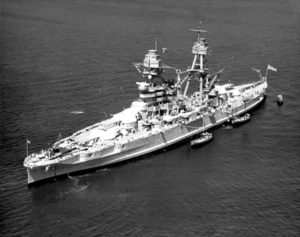
The USS Arizona was ‘the biggest and most powerful battleship, both defensively and offensively,’ said Franklin D. Roosevelt. Commissioned in 1916, the battleship measured 608 feet in length and 97 feet wide but was never used in WWI due to the oil shortage in Europe. The Pearl Harbor attack was her first and only enemy encounter.
In Sep. 1940, the Arizona returned to the U.S. for exercises in Long Beach, CA, before proceeding to Puget Sound Navy Yard near Tacoma, WA, for upgrades. Preparations for war had accelerated, as President Roosevelt placed an embargo on raw materials bound for Japan, which had invaded French Indochina and allied with Germany and Italy. During its overhaul, the Arizona’s anti-aircraft guns were upgraded and she was fitted with radar. Anything deemed nonessential to battle was stripped from the ship, including radios which sailors used for personal listening. The Arizona returned to Pearl Harbor in early 1941, and resumed intensive training. The ominous year would include minor collisions with the USS Davis and USS Oklahoma.
During his time aboard, Keith Jeffries was promoted three times, culminating in the rank of Coxswain (‘Cox-sin’). Keith’s rank indicates he may have been responsible for support vessels, involving tasks such as towing returning seaplanes to the ship, ferrying sailors to shore and fetching supplies for the ship.
Following its last training exercise on Dec. 4th, the Arizona was moored at Pearl Harbor, with several other ships, along so-called Battleship Row. On Dec. 6th, she was filled with approximately 1.5 million gallons of oil fuel, in preparation for an upcoming trip to the mainland. The next day, at 7:55 am, the air raid sounded and the men were ordered to battle stations. Several Japanese bombers were overhead, scoring direct hits on the Arizona. The final bomb struck at 8:06 am, and likely penetrated the armored deck, reaching the ammunition stockpile of the ship. Within seconds, the ammunition detonated, triggering a catastrophic explosion. The forward turrets collapsed, the interior structure lay gutted and the splintered ship was lifted out of the water. The resulting fireball burned for two days. However, not all of the oil burned, and seventy-seven years later, the wreckage continues to ooze several quarts of oil each day.
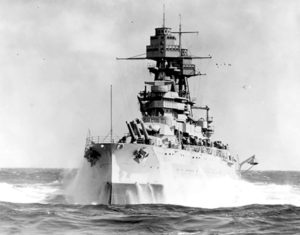
The USS Arizona was equipped with twelve 14-inch guns, capable of hurling half-ton shells over 10 miles.
Sometime before the attack, Keith communicated with his family, informing them he was in good health, and that the Navy was treating him well. Coxswain Keith Jeffries, 23, is believed to have died while manning a gun on the forward deck of the Arizona. His father learned of his death shortly before Christmas. His niece, Jane, recalled hearing about the attack while listening to the radio with her family in Cranford. As a tribute to his younger brother, John Jeffries would volunteer for the Navy in Dec 1942. This puzzled his family, and not because John was already 40 years old, but because he could not swim, as Jane recently joked with us.
Keith Jeffries’ body was never recovered and he is enshrined at the site of the devastation which became a national memorial. After the war, a new American Legion Post near Keith’s childhood home in PA was co-named in his memory. In all, 1177 men aboard the Arizona were killed, or nearly half of the 2403 deaths on the ‘Day of Infamy’ which prompted the U.S. to enter the war. Among the 335 survivors aboard the Arizona, only five men remain alive today, according to the USSArizona.org. Dozens of surviving crew members who have since died were interred in the sunken Arizona, their ashes set in the well at the base of Turret no. 4.
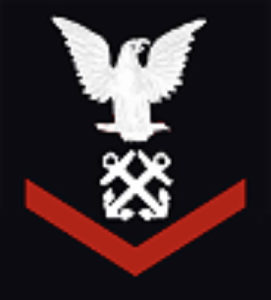
A rank insignia patch similar to what Coxswain Keith Jeffries would have worn on his right arm.
Our research revealed many survivors of the Pearl Harbor attack who would settle in Cranford after the war. Lawrence “Skip” Flanagan was a fireman aboard the USS Helena, spent a career in the Navy and became commander of Cranford VFW Post 335. Stephen Dmytriw was an aviator in the Army Air Corps, and later spent thirty years with the Cranford Police Reserves. Navy pilot Joseph Panetta was on standby, and fled his plane just ten minutes before it was struck on the runway. As an Army medic, Charles Weber treated the wounded at Pearl Harbor. Theodore Samuels was in the Army, and later an active member of Cranford Elks Lodge 2006. David Thompson and John William Keller Jr. served in the Army Air Corps and Navy, respectively, and became Masons at Cranford’s Azure Lodge 129. Henry Meyer served in the Army during World War I, before serving as an Officer in the Navy during World War II, including Pearl Harbor.
Keith Jeffries was an American hero, and the first Cranford 86 Hometown Hero lost among its fifty-seven fatalities during World War II. He would have turned 100 years old in 2018. For additional stories or to purchase volume one of the bound stories, please visit us at Cranford86.org, email us at info@Cranford86.org or call (908) 272-0876.
For additional profiles or to purchase volume one of Cranford 86 Hometown heroes booklet, please visit us at Cranford86.org, email us at info@Cranford86.org or call (908) 272-0876.
For even more history use these links.
https://en.wikipedia.org/wiki/USS_Arizona_(BB-39)#Salvage_and_memorial
https://www.youtube.com/watch?v=paOxB8_2ytQ
https://m.youtube.com/watch?v=Sx2cHTAPSXk
https://m.youtube.com/watch?v=j6C8-C7AKTQ
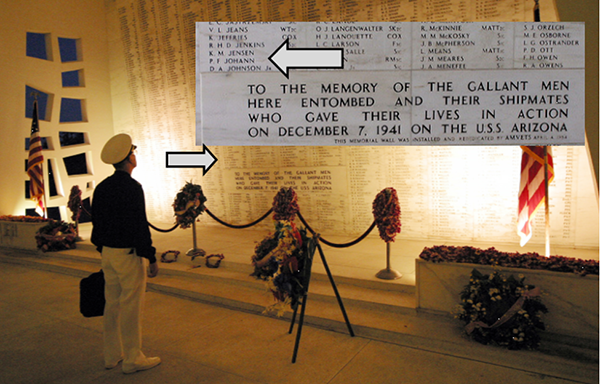
Keith Jeffries’ name is engraved in the USS Arizona Memorial Wall, alongside 1176 crew members who perished.
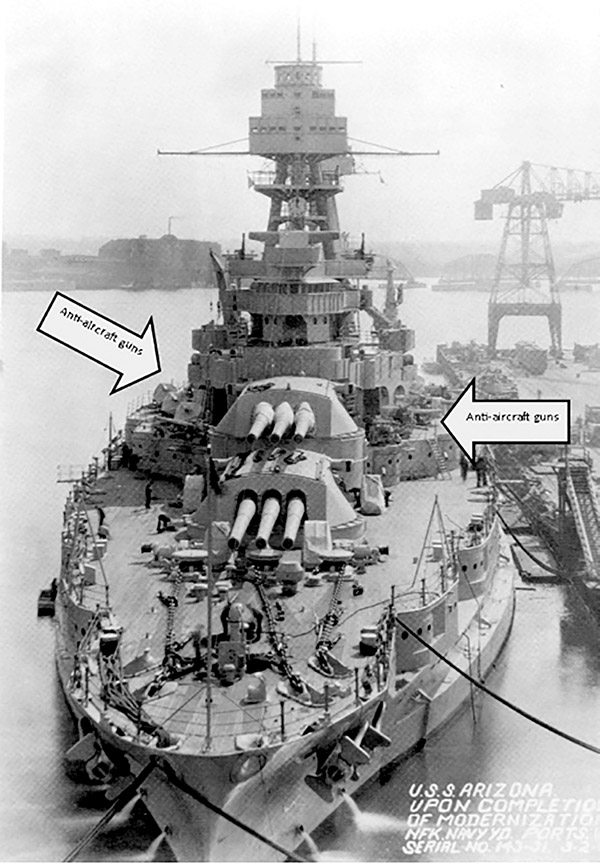
The foredeck of the USS Arizona, where Keith Jeffries was reportedly manning an anti-aircraft gun when he was killed 12/7/1941. The ship sustained a final blow near the big-gun turrets, and likely triggered a destructive explosion below deck in the main ammunition storage room.
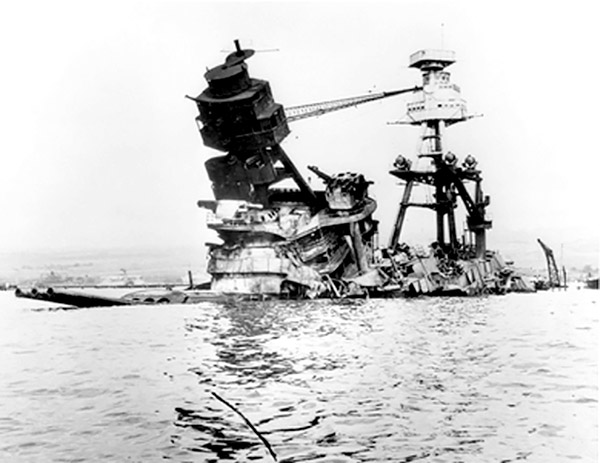
The USS Arizona, following two days of fire caused by the Pearl Harbor attack. The structures above the waterline were eventually removed and either scrapped or reused. The explosion was so strong that it somehow extinguished the fires of the neighboring ships.
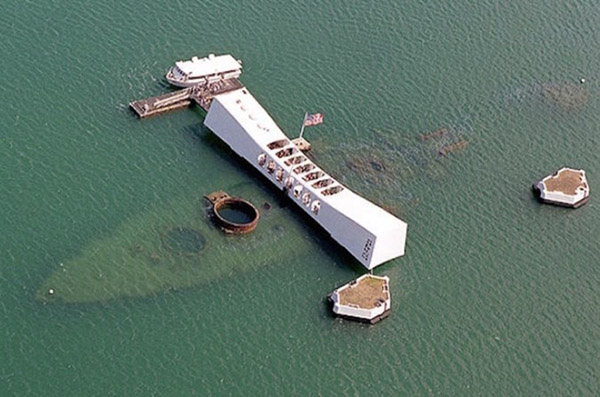
The USS Arizona Memorial, at Pearl Harbor in Honolulu, Hawaii. The bridge straddles, but does not touch the sunken hull, which rests 40 feet below the water surface. It is the final resting place of 1177 U.S. heroes. Each year, 1.8 million visitors pay respect, most in complete silence.
